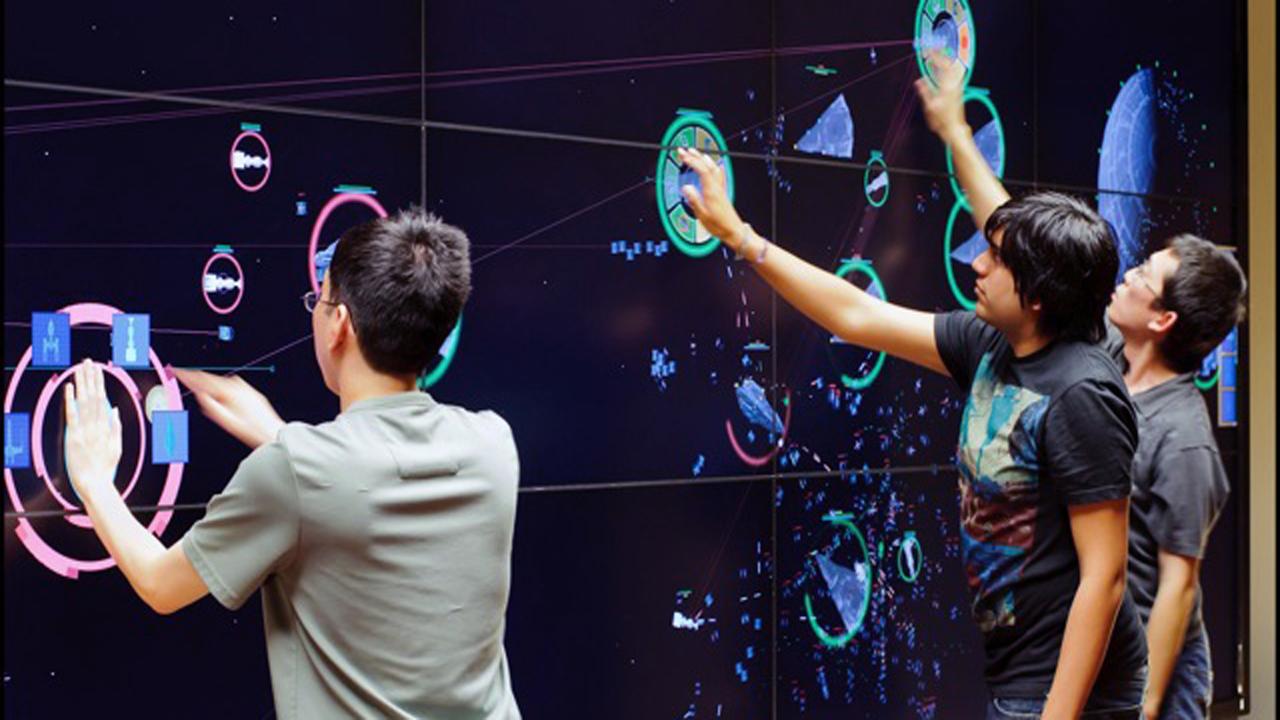|
|
||||||||||||||||||
Future World: EVL... where the clock is always 15 years fast
Participants: EVL faculty, staff, and students
UIC Alumni Magazine, Winter 2011 EDITOR’S NOTE: The Winter 2011 edition of UIC Alumni Magazine features the campus’ Electronic Visualization Laboratory (EVL) in the article “Future World’ by Stuart Luman. Before visiting EVL several times and talking extensively with faculty, staff, students and alumni, Luman did his homework - reading articles on the Lab and watching videos of historical and recent work that appear on television websites and YouTube - and he admitted at one point that he was “awash in information.” Given how thorough he was - Luman said “EVL and the general area definitely fascinates me” - he collected far too much information for one article, so decided he would write ‘a greatest hits or sampler pack… Too much to really give people a real sense of what the lab has done, but hopefully they’ll be left with a greater understanding of where the tech came from and a taste for the lab.” Stuart Luman was selected by UIC Alumni Magazine to write the feature, and he was certainly qualified. He has been a writer, editor and journalist for almost 15 years; he worked at Wired magazine and the Bulletin of the Atomic\ Scientists, and has written for BusinessWeek, Crain’s Chicago Business, Chicago magazine, and several other publications. Most recently, he is working on an IBM book project and a multimedia technology exhibit. FUTURE WORLD A scene in Star Wars. Life-like avatars. Cave Automatic Virtual Environment. They all germinated in UIC's Electronic Visualization Lab. A place where the clock is always 15 years fast. by Stuart Luman UIC Alumni Magazine, Winter 2011 EXCERPTS: Since its founding in 1973 as the Circle Graphics Habitat by artist and physicist Daniel Sandin and computer scientist Tom DeFanti, EVL has been a bridge between technology and the arts. A joint program of UIC’s College of Engineering and the School of Art and Design, it was one of the nation&rsquo:s first such labs. EVL students can graduate with an MFA in electronic visualization (perhaps, the oldest degree of its kind in the country) or an MS or PhD in computer science. Although not as well known or well funded as institutions such as MIT’s Media Lab, EVL has a long history of radically changing the way people visualize and interact with data and technology. Jason Leigh, PhD’98 Eng, the lab’s director, was recently profiled on PBS’s Nova ScienceNOW and the Discovery Channel's Popular Science’s Future Of. What caught the producers’ attention was Leigh and his colleagues’ efforts to create life-like computer avatars. The project, fittingly called LifeLike, seeks to digitally capture a person’s likeness, facial expressions and speech patterns and to create virtual reproductions that can interact with people far into the future. It’s all part of an effort by Leigh - and those at EVL - to push the boundaries of technology. “It’s one step closer to living in my Star Trek future,” says the 46-year-old Leigh, who has spent the last 20 years at EVL, first as a graduate student and then a professor, before becoming its director in 2005. “When I was a kid, I wanted to live in the science fiction world that Captain Kirk was living in. All we’re trying to do is to make it real.” Read the full article. Email: maxine@uic.edu Date: December 5, 2011 Document: UIC Alumni Magazine, Winter 2011 |